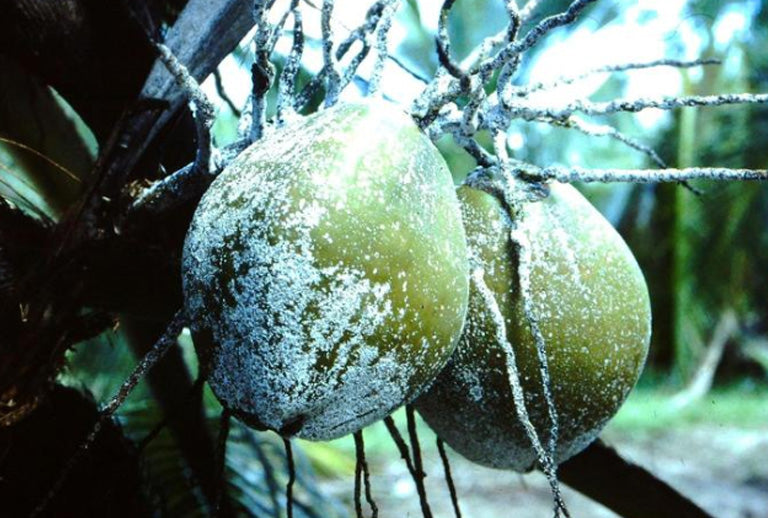Symptoms of Damage
Scale insects are more prevalent during summer and affect the leaves and nuts of coconut palms.In severe cases, scales form a continuous crust over flower spikes, young nuts, and the lower surface of leaves.On leaves, A. destructor causes scales, marked by yellow spots where the crawlers settle and mature into adults.Nymphs develop on leaves by feeding on sap.Entire leaves may yellow, turn brown, and fall off. Sooty mold may develop, visible as bright yellow on affected coconut palms from a distance.In extreme cases, leaves may dry out, entire fronds may drop, and the crown may die. Heavy infestation can stunt new leaf growth, reduce crop yield, or lead to complete crop failure.Infested coconut fronds show yellow areas on the upper surface, each marking the position of coconut scale insects on the underside.

1.Scale on leaves
2.Scale on coconut
Identification of the Pest
Egg: hatching the young scales on the undersides of the leaves.
Nymph: Covered with circular waxy secretion
Adult: The scale is bright yellow and round or reddish (female) and oval (male) covered with semitransparent grayish white flat scale. Females are always wingless and remain under their scale their entire life. Adult males have one pair of membranous wings, move about actively in search of females and do not feed during adult stage.
Management:
Chemical Method
Spray Fish Oil Rosin Soap (FORS) 2.5% or spray Malathion. A second round is given after 20 days.
Biological Method:
Release of predatory Coccinellids, Chilocorus nigritius is found to be effective.
